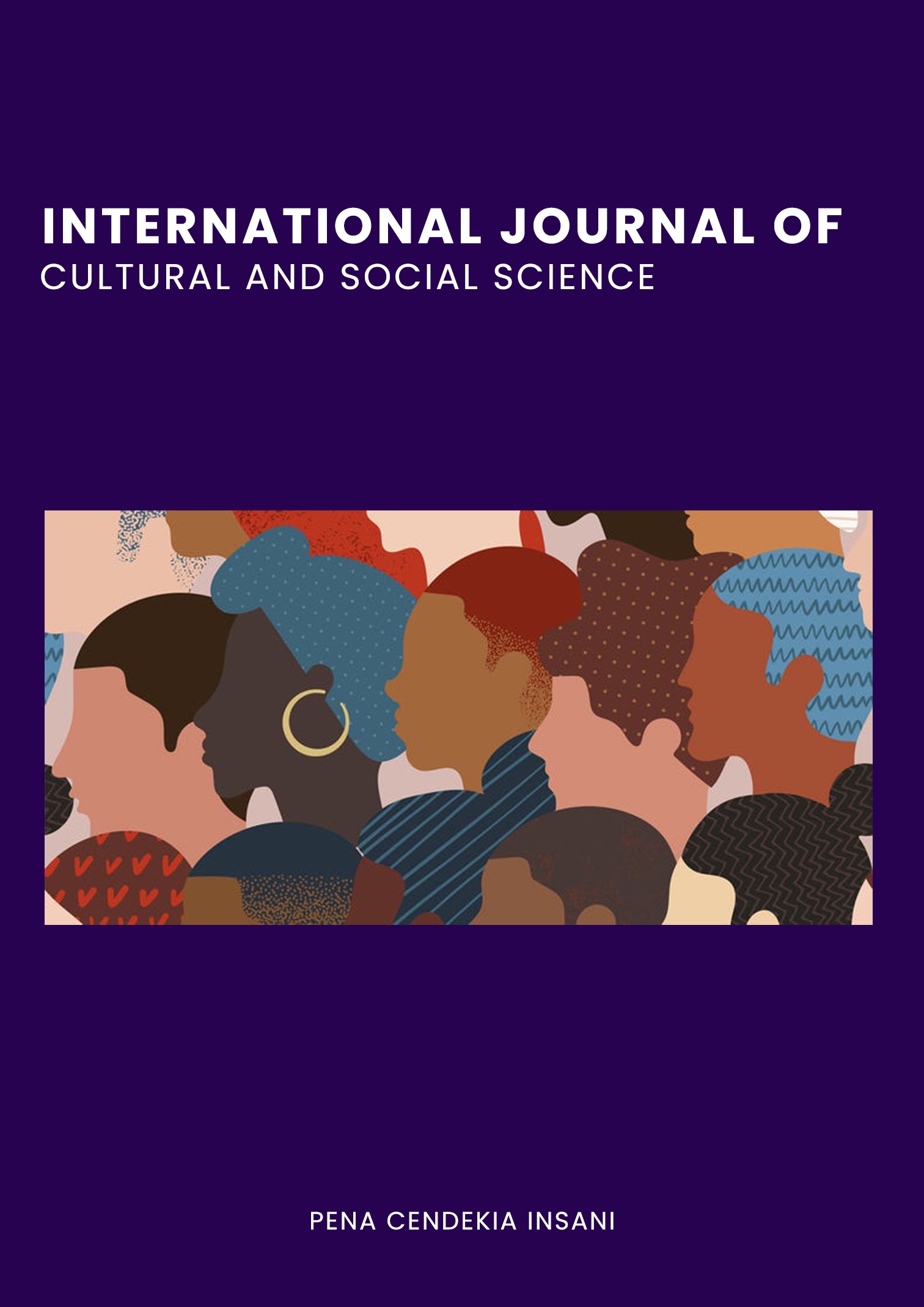UTILIZATION OF DIGITAL TECHNOLOGY, LOCAL WISDOM, ECONOMIC LITERACY AND ITS IMPACT ON STUDENT BUSINESS PERFORMANCE IN THE DIGITAL
DOI:
https://doi.org/10.53806/ijcss.v6i1.1074Keywords:
Digital Technology, Local Wisdom, Economic Literacy, Business Performance, Student EntrepreneurshipAbstract
This study aims to analyze the influence of Digital Technology Utilization, Local Wisdom Integration, and Economic Literacy on Student Business Performance (UMKM). The background of the study is rooted in the importance of strengthening student entrepreneurship in the digital era and local-based context, especially in facing market competition and the need to adapt to technological advances and cultural values. The research employed a quantitative approach with an associative design. The sample consisted of 40 student entrepreneurs from the Economic Education Department at FEB UNIMA, selected through purposive sampling. Data were collected using a Likert-scale questionnaire and analyzed using simple and multiple linear regression. The results indicate that each independent variable (X1, X2, and X3) has a positive and significant effect on student business performance when tested separately. However, in the multiple regression model, although the overall model is statistically significant, the individual effects of each variable are not significant. The coefficient of determination (R²) of 0.297 indicates that the three variables combined explain 29.7% of the variance in student business performance. This study recommends a synergistic strategy combining digitalization, local culture preservation, and improved economic literacy to support the sustainable development of student-run UMKM.
References
[1] S. S. Hasnida, R. Adrian, and N. A. Siagian, Transformasi Pendidikan di Era Digital, vol. 1, no. 1. 2024. [Online]. Available: https://kumparan.com/aan-herdian89/transformasi-pendidikan-di-era-digital-1zG74Ilpzc4/4
[2] U. P. Ganesha, International Education of Elementary, vol. 6 (2). 2022.
[3] N. Dobreva and S. Ivanov, “Cultural entrepreneurship: A review of the literature,” Tour. Manag. Stud., vol. 16, no. 4, pp. 23–34, 2020, doi: 10.18089/tms.2020.160402.
[4] C. G. Traver and K. C. Laudon, E - commerce 2020-2021 business.technology.society. 2021.
[5] L. S. Noor, D. Deriawan, and A. Oktrivina, “E-commerce and Financial Performance: Identification on Trends, Benefits and Challenges,” Atestasi J. Ilm. Akunt., vol. 6, no. 1, pp. 528–543, 2023, doi: 10.57178/atestasi.v6i1.931.
[6] B. Surya, F. Menne, H. Sabhan, S. Suriani, H. Abubakar, and M. Idris, “Economic growth, increasing productivity of smes, and open innovation,” J. Open Innov. Technol. Mark. Complex., vol. 7, no. 1, pp. 1–37, 2021, doi: 10.3390/joitmc7010020.
[7] I. Confente, D. Scarpi, and I. Russo, “Marketing a new generation of bio-plastics products for a circular economy: The role of green self-identity, self-congruity, and perceived value,” J. Bus. Res., vol. 112, no. October, pp. 431–439, 2020, doi: 10.1016/j.jbusres.2019.10.030.
[8] V. Afnita, U. N. Padang, R. Artikel, and K. Kunci, “KREATIVITAS,” no. 1, pp. 79–87, 2023.
[9] E. Martínez-Caro, J. G. Cegarra-Navarro, and F. J. Alfonso-Ruiz, “Digital technologies and firm performance: The role of digital organisational culture,” Technol. Forecast. Soc. Change, vol. 154, no. June 2019, p. 119962, 2020, doi: 10.1016/j.techfore.2020.119962.
[10] B. Thalib and P. H. Prihanto, “Strategy to Increase Local Economic Competitiveness Through Local Wisdom-Based Creative Economy,” vol. 1, no. 9, pp. 91–104, 2024.
[11] R. Garud, P. Tuertscher, and A. H. Van de Ven, “Perspectives on Innovation Processes,” Acad. Manag. Ann., vol. 7, no. 1, pp. 775–819, 2013, doi: 10.5465/19416520.2013.791066.
[12] Suharto, W. R. Junaedi, H. M. Muhdar, A. Firmansyah, and Sarana, “Consumer loyalty of Indonesia e-commerce SMEs: The role of social media marketing and customer satisfaction,” Int. J. Data Netw. Sci., vol. 6, no. 2, pp. 383–390, 2022, doi: 10.5267/j.ijdns.2021.12.016.
[13] Agustina Berliana and Habiburrahman, “the Influence of Financial Planning, Financial Technology, and Financial Inclusion on Improving Msme Business Performance in Bandar Lampung,” Int. J. Accounting, Manag. Econ. Soc. Sci., vol. 2, no. 2, pp. 528–542, 2024, doi: 10.61990/ijamesc.v2i2.211.
[14] N. C. Won, C. Wan, and M. Y. Sharif, “Effect of leadership styles, social capital, and social entrepreneurship on organizational effectiveness of social welfare organization in Malaysia: Data screening and preliminary analysis,” Int. Rev. Manag. Mark., vol. 7, no. 2, pp. 117–122, 2017, [Online]. Available: http:www.econjournals.com
[15] Titin, N. Safa’atillah, M. M. Sulaeman, and P. Cahyono, “Product Development Strategy Based on Local Wisdom to Strengthen the Identity of SMEs during Ramadan,” J. Contemp. Adm. Manag., vol. 2, no. 1, pp. 394–401, 2024, doi: 10.61100/adman.v2i1.158.
[16] M. K. Salemi, “Teaching Economic Literacy: Why, What and How,” Int. Rev. Econ. Educ., vol. 4, no. 2, pp. 46–57, 2005, doi: 10.1016/S1477-3880(15)30132-8.
[17] G. Vial, “Understanding digital transformation,” Manag. Digit. Transform., pp. 13–66, 2021, doi: 10.4324/9781003008637-4.
[18] B. Shandy and A. Wibowo, “Heliyon Family economic education , peer groups and students ’ entrepreneurial intention?: the mediating role of economic literacy,” Heliyon, vol. 7, no. March, p. e06692, 2021, doi: 10.1016/j.heliyon.2021.e06692.
Downloads
Published
Issue
Section
License
Copyright (c) 2025 Allen A. CH Manongko, Vinda Afnita, Lidia Aprileny Hutahaean

This work is licensed under a Creative Commons Attribution-ShareAlike 4.0 International License.










